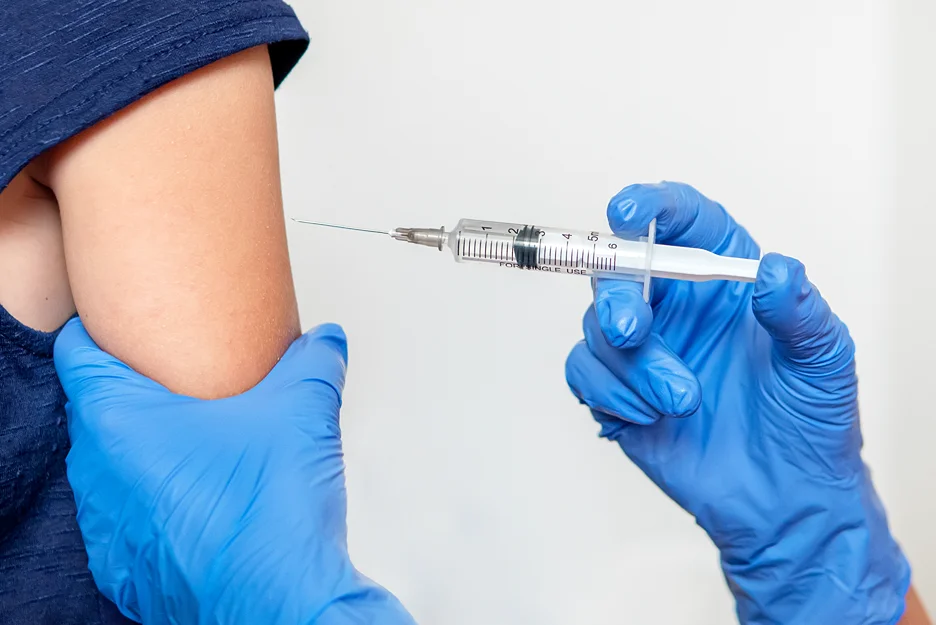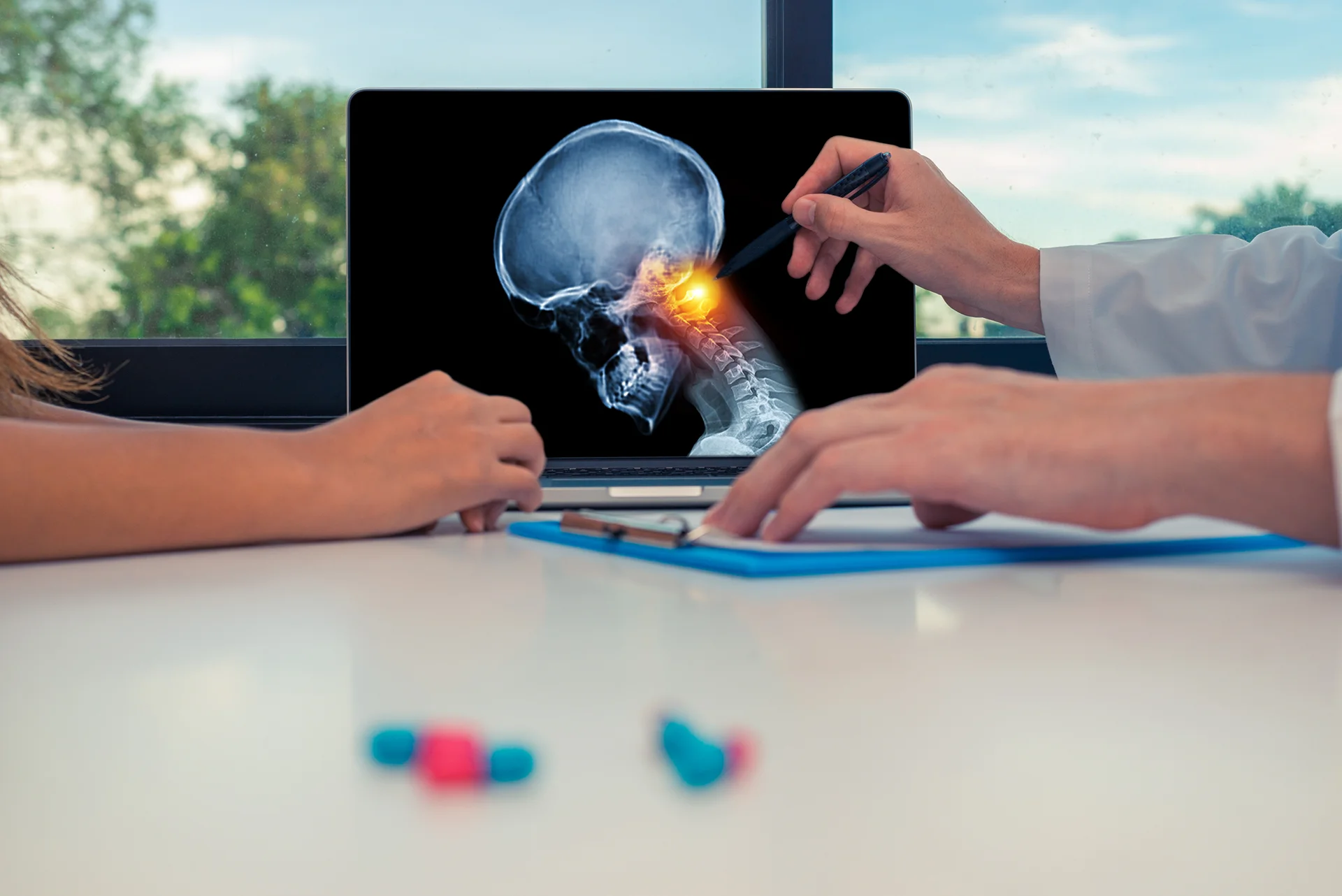That Pain in Your Neck Could Be a Sign of Something More Serious
Have you ever woken up and found that your neck is suddenly very stiff and painful to move? Or maybe you noticed neck pain along with other worrying symptoms like a bad headache, fever, and chills.
While it may seem like you just slept in an awkward position, a sore and stiff neck can actually be a sign of meningitis – a potentially dangerous inflammation of the membranes surrounding the brain and spinal cord.
Meningitis causes the tissues around the brain and spine to become inflamed. This leads to a number of neurological symptoms, with a stiff and painful neck being one of the most common.
Meningitis can be caused by viruses, bacteria, fungi, or other microorganisms. Bacterial meningitis is the most concerning form and requires urgent medical treatment.
What is Meningitis?
Meningitis is an inflammation of the protective membranes covering the brain and spinal cord, known as the meninges. It can be caused by both viral and bacterial infections.
When meningitis occurs, the meninges—the thin layers of tissue that surround the brain and spinal cord—become irritated and inflamed. This inflammation can produce neck stiffness or pain as a result of the meninges extending into the neck area.
The inflammation and irritation of the meninges in the neck manifest as pain or stiffness when bending or moving the neck. Timely treatment of meningitis is important to prevent potentially serious complications that could impact the brain and nervous system.
What Are the Typical Symptoms and Signs of Meningitis Neck Pain?

The most characteristic symptom of meningitis is a stiff and painful neck, also known as nuchal rigidity. Here are some of the key signs and symptoms associated with meningitis neck pain:
| Symptom | Description |
| Severe Neck Stiffness and Pain | The neck often becomes very stiff with severe pain when trying to touch the chin to the chest. There is difficulty moving the neck from side to side. |
| Headache | Most people with meningitis develop a headache in the early stages. It often gets worse over time. The headache may be severe, debilitating, and unrelieved by over-the-counter pain medication. |
| Fever | Fever is common in bacterial and viral meningitis, though people with milder viral meningitis may have little or no fever. The fever is often higher than 102°F. |
| Chills | Sudden cold sensations with shivering are common. The person may feel chilled even under heavy blankets. |
| Nausea and Vomiting | Nausea with or without vomiting is seen in many cases of meningitis. Vomiting may be projectile. |
| Photophobia | Sensitivity to bright lights is common, along with a general worsening of symptoms with exposure to light. |
| Confusion | The person may appear confused or not think clearly. Severe cases can lead to delirium. |
| Fatigue | Lethargy and lack of energy are commonly seen even in early stages. |
| Rash | A rash occurs in about half of bacterial meningitis cases, appearing 1-2 days after the onset of illness. It appears as small, red pinpoints or blotches. |
Not everyone with meningitis will have all these symptoms. But even one or two of these signs, especially neck stiffness and pain along with fever, point to the possibility of meningitis.
What Causes and Risk Factors Lead to Meningitis Neck Pain?
Meningitis is caused by infectious agents like bacteria, viruses, fungi, and parasites. Meningococcal Infections reach the brain and spinal cord membranes through the bloodstream or by direct contact. Here are some key causes and risk factors:
- Viral Infections – Enteroviruses cause most cases of viral meningitis, while herpes simplex virus, varicella-zoster virus, and mosquito-borne viruses account for others. Viral meningitis symptoms are usually milder than the bacterial form.
- Bacterial Infections – The most common causes of bacterial meningitis are Neisseria meningitidis (meningococcus) and Streptococcus pneumoniae. It also can be caused by Haemophilus influenzae type B and certain other bacteria. Bacterial meningitis progresses rapidly and can be fatal.
- Fungal Infections – Cryptococcus neoformans fungus is a common culprit, mostly affecting those with compromised immune systems. Other rare fungi can also infect the meninges.
- Parasites – Parasites like single-celled amoebas can in rare cases make their way to the brain via contaminated water, causing meningitis.
- Head Injury or Neurosurgery – Head trauma or brain surgeries can introduce bacteria to the meninges and CSF, causing subsequent infection.
- Cancer and Chemotherapy – Cancer, especially blood cancers, increases susceptibility to meningitis. Chemotherapy further raises risks by weakening the immune system.
- Immune Deficiencies – Those without a normal functioning immune system, like people living with HIV/AIDS, are at higher risk.
- Age – Newborns and the elderly have higher chances of bacterial meningitis.
- Prior Viral Infection – A recent or active viral infection makes some people prone to bacterial meningitis.
How is Meningitis Neck Pain Diagnosed?
If signs and symptoms indicate meningitis, prompt medical attention is vital, especially to rule out potentially fatal bacterial meningitis.
Doctors will want to know the history of symptoms and perform a detailed physical exam focusing on the neck, neurological functions, and any skin rashes.
Initial testing usually includes:
- Blood Tests – Blood cultures are drawn to identify bacteria. A complete blood count looks for elevated white blood cell count indicating infection. Basic metabolic panels check electrolytes, kidney and liver function.
- Imaging – A CT scan of the head can rule out brain bleeding and swelling. MRI more clearly shows meningeal inflammation signs. X-rays help check lungs and sinuses for infection sources.
- Spinal Tap – The definitive diagnostic test is a lumbar puncture to collect cerebrospinal fluid. Analysis of the CSF detects increased white blood cells, decreased glucose, and the presence of infectious agents. The tap should ideally be done before starting antibiotics.
Early diagnosis and treatment initiation are critical, so doctors may start antibiotics even before all test results are back, especially in suspected bacterial meningitis.
How is Meningitis with Neck Pain Treated?
The right treatment depends on properly identifying the cause as bacterial, viral fungal, or other types. Bacterial meningitis requires urgent antibiotic therapy, while mild viral meningitis may only need supportive treatment.
Bacterial Meningitis
Once samples are drawn for testing, empiric broad-spectrum IV antibiotics are started even before lab results confirm a bacterial infection. Ceftriaxone or cefotaxime are common first-line antibiotics. Dexamethasone may be given with antibiotics to reduce inflammation and the risk of hearing loss.
Viral Meningitis
Mild viral meningitis usually needs only fever reducers, fluids, and rest. Severe cases may require antiviral therapy. Patients should avoid dehydration. Hospitalization for a few days allows close monitoring.
Fungal Meningitis
Antifungal medications like amphotericin B are used to treat fungal infections. Immune-compromised patients require longer therapy.
General Supportive Treatment
Good pain management, IV fluids, oxygen support, medications for increased cranial pressure, and nursing care to prevent bedsores and falls are key during hospitalization.
Even with treatment, recovery can be slow depending on the severity. Complications like neurological deficits may need extensive rehabilitation with physical, occupational, and speech therapy. Follow-up physical exams and tests are done to ensure full recovery.
How Can Meningitis Neck Pain Be Prevented?

Many common causes of bacterial meningitis can be prevented through vaccinations. Good hygiene, prompt treatment of infections, and awareness of symptoms help reduce risk. Preventive measures include:
- Vaccination – Immunization against Haemophilus influenzae type B, meningococcus, and pneumococcus should be kept up to date. Annual flu shots help protect against associated secondary bacterial infections.
- Hygiene – Handwashing, covering coughs, and avoiding sharing drinks or utensils stops transmission of infections like colds and flu which can sometimes lead to meningitis.
- Reduce Exposure – People with compromised immunity should avoid crowded places during outbreaks. Anyone in close contact with a meningitis patient should get preventive antibiotics.
- Early Treatment – Promptly treating respiratory, ear, sinus or other infections prevents them from spreading to the meninges.
- Know the Symptoms – Recognizing early signs like neck pain and getting emergency care quickly improves outcomes in bacterial meningitis.
Conclusion
A stiff and painful neck along with fever, headache, nausea, and mental confusion can indicate a serious condition of meningitis. While some mild viral cases may resolve on their own, bacterial meningitis is a dire neurologic emergency needing hospitalization and intravenous antibiotics.
Preventive vaccines, good hygiene, and prompt treatment of infections reduce risk. But quick recognition of symptoms and urgent medical care are key to preventing permanent injury or even death in this dangerous inflammation around the brain and spine.
FAQs
1. What is meningitis and how is it related to neck pain?
Meningitis is an inflammation of the protective membranes covering the brain and spinal cord. One of the common symptoms of meningitis is a stiff neck or neck stiffness, making it painful for the person to move their neck, especially when trying to touch the chin to the chest.
2. Are there different types of meningitis that can cause neck pain?
Yes, there are several types of meningitis, such as bacterial meningitis, viral meningitis, and fungal meningitis. Regardless of the type, neck stiffness is a prevalent symptom in many cases.
3. Besides neck pain, what are other signs of meningitis?
Other common symptoms include fever, sensitivity to light (or bright lights), headache, and fatigue. In severe cases, a rash may appear, often resembling blotchy skin.
4. How is meningitis diagnosed?
A lumbar puncture, where spinal fluid is extracted from the spinal canal, is a common diagnostic test. Blood tests can also provide insights, especially in identifying bacterial infections causing meningitis.
5. I have a stiff neck. Should I be concerned about meningitis?
If you experience neck stiffness along with other symptoms like fever, headache, and sensitivity to light, make it a point to consult a medical professional promptly. While a stiff neck can be due to various reasons, when combined with other signs of meningitis, it could indicate a medical emergency.
Could Your Neck Pain Be A Sign of Meningitis? Consult a Doctor.

Unexplained severe or persistent neck pain can sometimes indicate serious medical conditions like meningitis. Don’t take chances with your health. Connect right away with licensed doctors through Kaly’s online platform to discuss your neck pain and get a professional evaluation.
Their network of primary care physicians and specialists can assess your symptoms, order tests if needed, and provide prompt treatment. Get answers and peace of mind – book a Kaly appointment today.
